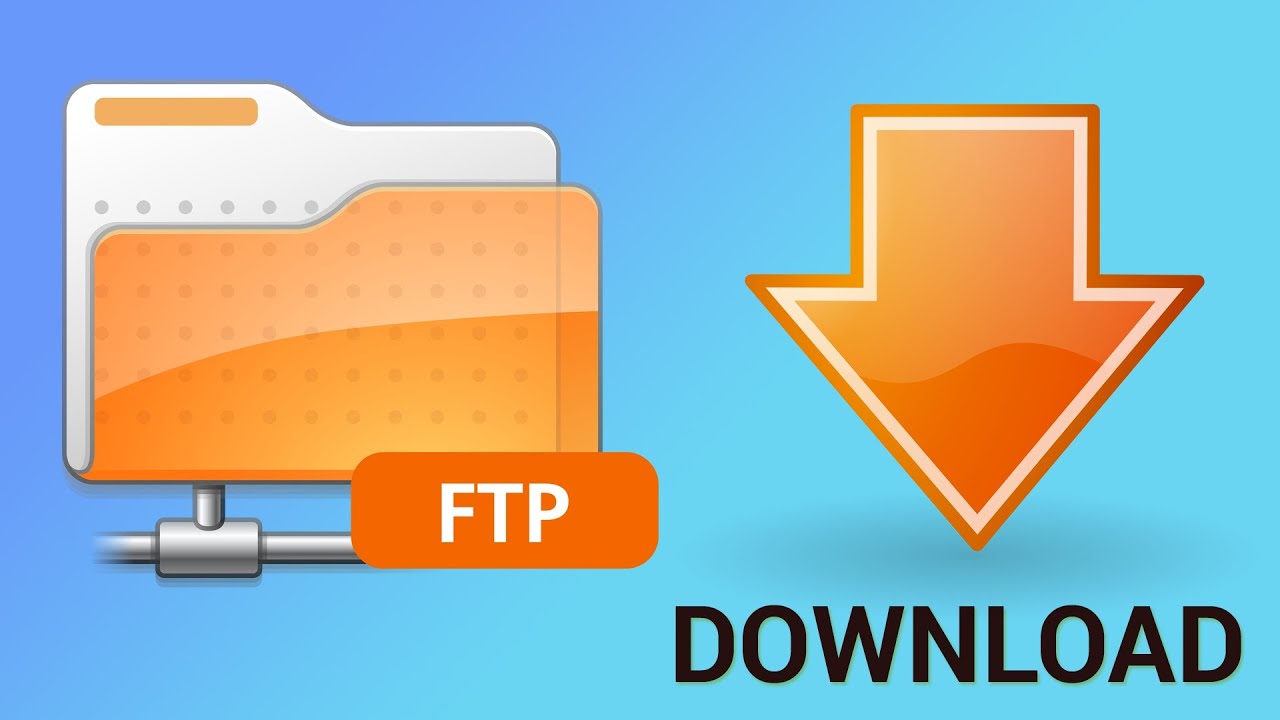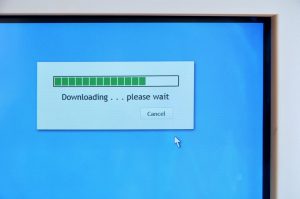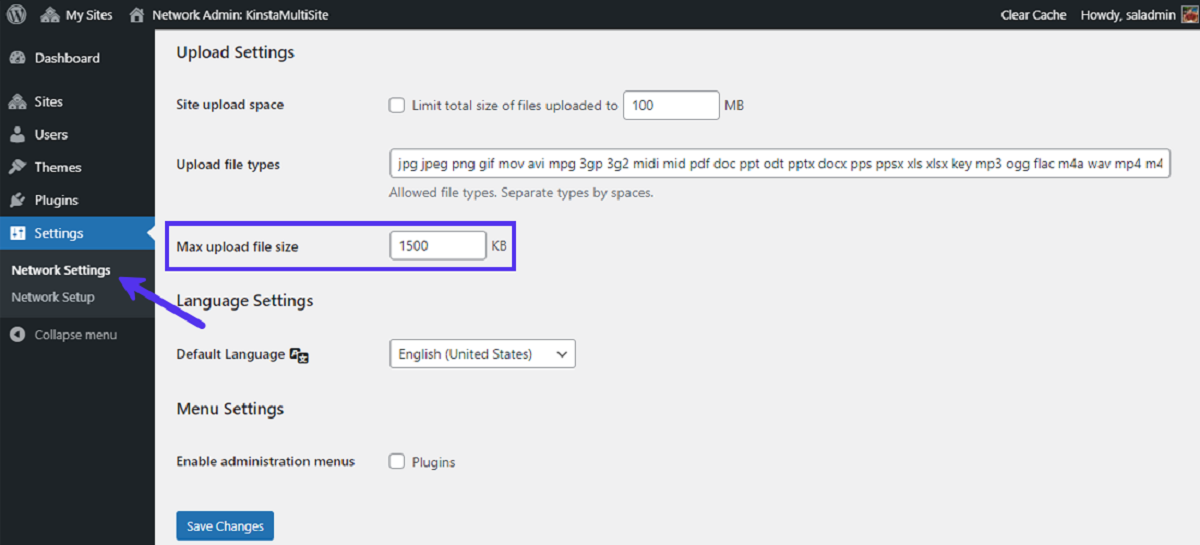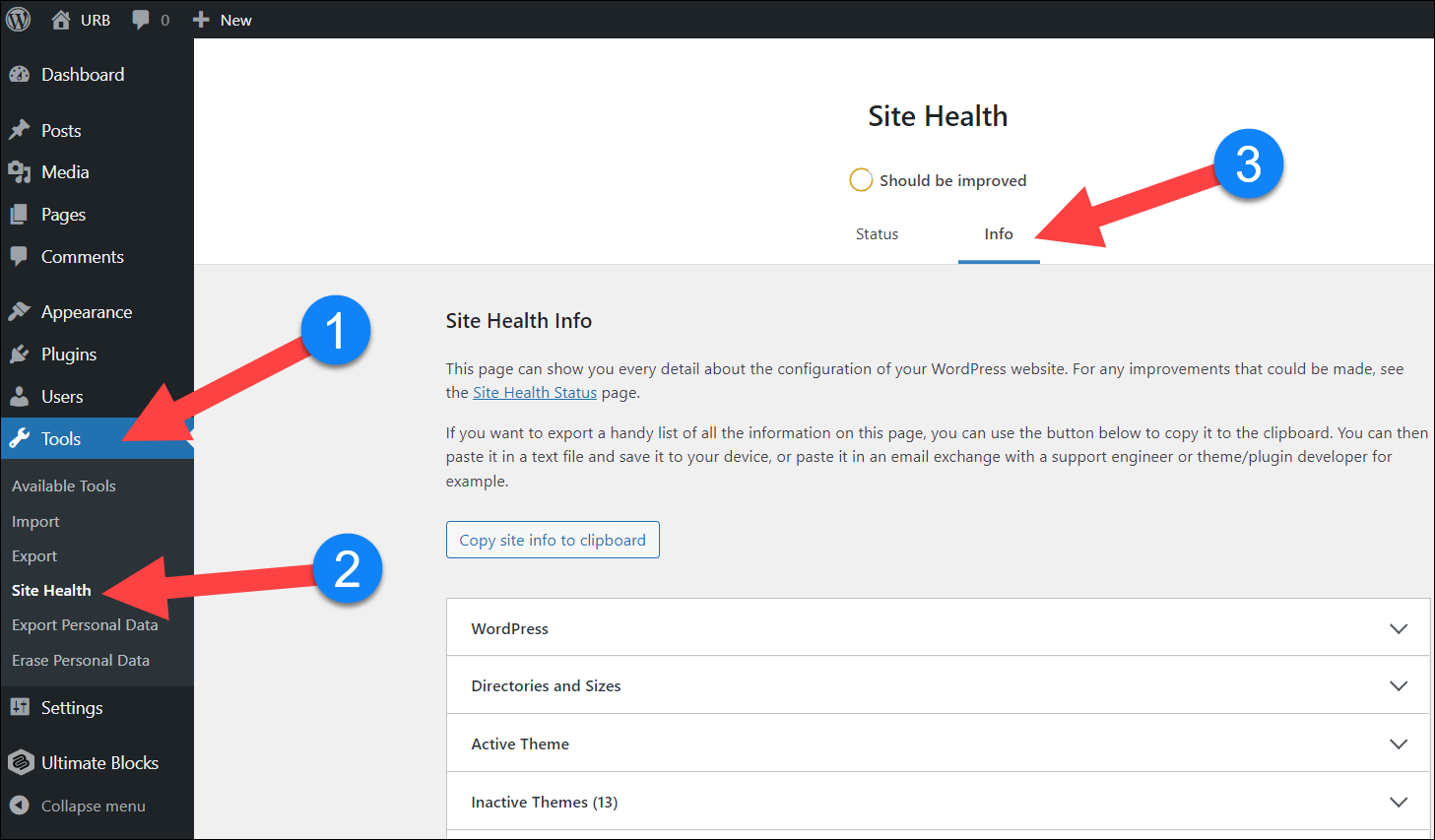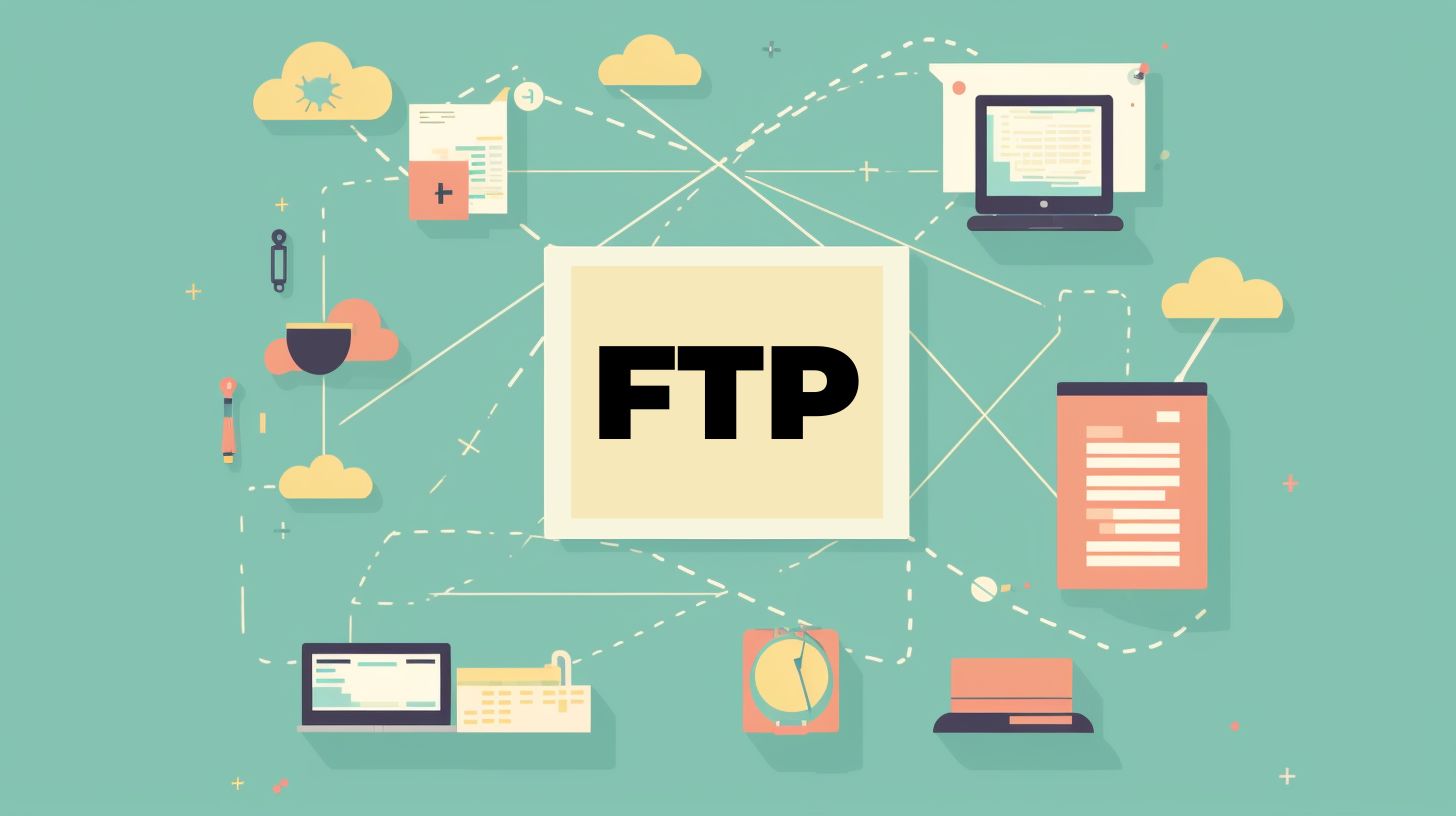Introduction
Welcome to our guide on how to download files from an FTP site. FTP, short for File Transfer Protocol, is a popular method for transferring files over the internet. Whether you need to download files for a personal project or for work, understanding how to navigate and retrieve files from an FTP site is a valuable skill.
In this article, we will walk you through the process of downloading files from an FTP site, step by step. We will cover everything from identifying the FTP site to choosing and installing an FTP client. By the end of this guide, you will be equipped with the knowledge and tools necessary to effortlessly download files from any FTP site.
Downloading files from an FTP site can be useful in various scenarios. For instance, if you are a web developer, you may need to access and download website files from a client’s FTP server. Or perhaps you are a hobbyist looking to download files from an FTP site that hosts software, music, or other media files. Whatever the reason, understanding how to download files from an FTP site will open up a world of possibilities.
Before we get started, it’s important to note that FTP sites require proper authentication, which means you will need valid login credentials to access and download files. If you do not have the necessary login information, you will not be able to connect to the FTP site and download files. So, make sure you have the correct credentials before proceeding with the steps outlined in this guide.
Now that we’ve covered the basics, let’s dive into the step-by-step process of downloading files from an FTP site. By following these steps, you’ll be able to download your desired files in no time!
Step 1: Identify the FTP Site
The first step in downloading files from an FTP site is to identify the specific FTP site from which you want to download files. An FTP site is essentially a server that hosts files and allows users to access and retrieve them using FTP protocols.
There are various ways to identify an FTP site. If you are downloading files for work or have been provided with the FTP site details, you may already have the necessary information to connect to it. Typically, you will need the FTP server address or URL, as well as the username and password associated with the FTP site.
If you are not sure about the FTP site details, you can try exploring the website of the entity or organization you want to download files from. Many organizations provide FTP access for users to download files conveniently. Look for any “Download” or “FTP” links on their website to determine if an FTP site is available.
In some cases, you may need to contact the website administrator or the person responsible for providing FTP access. They can provide you with the necessary FTP site details, including the server address and login credentials.
Once you have the FTP site details, it’s time to move on to the next step: choosing an FTP client. An FTP client is a software application that enables you to connect to an FTP site and transfer files between your computer and the server. There are many FTP client options available, both free and paid, each offering different features and functionalities.
In the next step, we will discuss the process of choosing and installing an FTP client. This is an essential step as the FTP client will be your primary tool for accessing and downloading files from the FTP site. So, let’s move on to step 2: choosing an FTP client.
Step 2: Choose an FTP client
Choosing the right FTP client is crucial for a seamless and efficient file downloading experience. An FTP client acts as a bridge between your computer and the FTP site, allowing you to connect and transfer files easily.
When it comes to selecting an FTP client, there are several options available, each with its own set of features and user interfaces. Whether you’re a beginner or an advanced user, it’s important to choose an FTP client that suits your specific needs and preferences.
Here are a few popular FTP clients to consider:
- FileZilla: FileZilla is a widely-used open-source FTP client that is known for its user-friendly interface and robust features. It supports both FTP and FTPS (FTP over SSL/TLS) protocols, making it a secure option for file transfers.
- Cyberduck: Cyberduck is another free, open-source FTP client that is compatible with Windows and macOS. It offers a simple and intuitive user interface and supports various protocols, including FTP, SFTP, and WebDAV.
- WinSCP: WinSCP is a feature-rich FTP client that is specifically designed for Windows users. It supports both FTP and SFTP protocols, making it a secure choice for file transfers. It also includes useful features like file synchronization and remote editing.
- Core FTP: Core FTP is a Windows-based FTP client that offers a range of advanced features for power users. It supports FTP, FTPS, and SFTP protocols and includes features like SSH file transfer, file encryption, and folder synchronization.
These are just a few examples of FTP clients available in the market. Consider your specific needs, such as ease of use, security features, and compatibility with your operating system, when making your selection.
Once you have chosen an FTP client, it’s time to install it on your computer. In the next step, we will guide you through the installation process, ensuring you have the necessary tools to connect and download files from the FTP site. So, let’s move on to step 3: installing the FTP client.
Step 3: Install the FTP Client
After selecting the FTP client that suits your needs, the next step is to install it on your computer. Installing the FTP client will provide you with the necessary software to establish a connection with the FTP site and download files effortlessly.
The installation process may vary slightly depending on the chosen FTP client and your operating system. However, the general steps outlined below should guide you through the installation process:
- Visit the official website of the FTP client you have chosen. Look for a download section or button to access the installation files.
- Click on the download link to save the installation file to your computer.
- Navigate to the location where the installation file was saved and double-click on it to start the installation process.
- Follow the on-screen instructions provided by the installation wizard. These instructions may include accepting the license agreement, choosing the installation directory, and selecting additional components.
- Once the installation is complete, you may be prompted to launch the FTP client immediately or you can manually open it from the Start menu or desktop shortcut.
During the installation process, you may encounter additional options or settings that can be customized based on your preferences. Take your time to review these options and select the ones that best suit your needs.
It is important to note that some FTP clients may require additional dependencies or software components to function properly. If prompted, make sure to install these dependencies to ensure smooth operation of the FTP client.
After successfully installing the FTP client, you are now ready to launch it and proceed to the next step: connecting to the FTP site. This will allow you to establish a connection with the FTP server and explore the files available for download. In the following step, we will guide you through the process of connecting to the FTP site, so let’s move on to step 4: launching the FTP client.
Step 4: Launch the FTP Client
Now that you have successfully installed the FTP client on your computer, it’s time to launch the software. Launching the FTP client will allow you to access its user interface and start the process of connecting to the FTP site.
The exact steps to launch the FTP client may vary depending on the software you have installed and your operating system. However, the following general steps should guide you through the process:
- Locate the installed FTP client on your computer. This may be in the Start menu, desktop shortcut, or in the list of installed applications.
- Double-click on the FTP client icon or select it from the list to launch the software.
- Wait for the FTP client to open and load its user interface. You should see a window or interface where you can enter the necessary information to connect to an FTP site.
Once the FTP client is launched and the user interface is loaded, you are ready to move on to the next step: connecting to the FTP site. This is where you will provide the FTP site details and establish a connection with the FTP server.
Before proceeding, make sure you have the FTP server address, username, and password at hand. These details are required to establish a connection and gain access to the files available on the FTP site.
In the following step, we will guide you through the process of connecting to the FTP site using the FTP client. By following these steps, you will be able to establish a secure connection and navigate through the directories of the FTP site. So, let’s move on to step 5: connecting to the FTP site.
Step 5: Connect to the FTP Site
With the FTP client launched and ready, it’s time to establish a connection to the FTP site. By connecting to the FTP site, you’ll be able to access and navigate through its directories, and eventually download the files you need.
Follow these steps to connect to the FTP site using your chosen FTP client:
- Locate the option to connect or establish a new connection within the FTP client’s user interface. This could be a button labeled “Connect,” “New Connection,” or similar.
- Enter the FTP server address or URL in the appropriate field. This is typically provided in the format “ftp://ftp.example.com” or “ftp.example.com”.
- Specify the port number, if necessary. Most FTP servers use the default port 21, but some may require an alternative port. Check with the FTP site administrator or consult any documentation provided.
- Enter your FTP site username and password in the appropriate fields. These credentials are necessary for authentication and access to the files on the FTP server. Ensure they are entered correctly.
- If the FTP client supports different connection types, such as FTP, FTPS, or SFTP, select the appropriate connection type based on the FTP site’s requirements. FTPS and SFTP provide an extra layer of security through encryption.
- Click on the “Connect” or “Login” button to establish the connection to the FTP site.
Once the connection is established, the FTP client will attempt to authenticate and verify your credentials. If successful, you’ll gain access to the FTP server and be able to see a list of files and directories available for download.
If the connection is not successful, double-check your FTP site details, including the server address, username, and password. Ensure they are entered correctly and try again. If issues persist, reach out to the FTP site administrator for assistance.
Now that you’ve successfully connected to the FTP site, it’s time to navigate through its directories and locate the files you want to download. In the next step, we’ll cover the process of navigating through the FTP directories, so let’s move on to step 6: navigating through the FTP directories.
Step 6: Navigate through the FTP Directories
Once you have successfully connected to the FTP site, you will need to navigate through its directories to locate the specific files or folders you want to download. Navigating through FTP directories is similar to navigating through folders on your local computer.
To navigate through directories on the FTP site, follow these steps:
- Within the FTP client’s user interface, you should see a file explorer or directory listing. This will display the files and folders available on the FTP site.
- Double-click on a folder to open it and view its contents.
- If there are additional subfolders within the selected folder, you can continue double-clicking on them to access nested directories.
- Use the “Up” or “Go Up” button/icon in the FTP client to go back to the parent directory.
- Some FTP clients may provide a breadcrumb navigation bar or a path field where you can directly enter the path of the desired directory.
As you navigate through the FTP directories, observe the file names, sizes, and modification dates to identify the files you need. The FTP client may also provide options to sort and search for specific files, making it easier to locate what you’re looking for.
If you encounter any access restrictions or permission errors while navigating the FTP directories, it may indicate that certain directories or files are restricted and cannot be accessed by your user account. Keep this in mind when searching for specific files.
Once you have successfully located the files you want to download, it’s time to proceed to the next step: selecting the files for download. In the following step, we’ll guide you through the process of selecting files from the FTP directories, so let’s move on to step 7: selecting files to download.
Step 7: Select Files to Download
Now that you have navigated your way through the FTP directories and identified the files you want to download, it’s time to select those files for download. The FTP client provides various ways to select multiple files or folders, making the process efficient and time-saving.
Here are a few methods to select files for download using an FTP client:
- Single File Selection: Click on a file to select it. Hold down the Ctrl key (or Command key on Mac) while clicking to select multiple individual files.
- Range Selection: Click on the first file in a range, then hold down the Shift key and click on the last file in the range. This will select all files within the range, including the first and last file.
- Select All: Use the “Select All” option within the FTP client’s interface or press Ctrl+A (or Command+A on Mac) to select all files in the current directory.
- Select Folder and Its Contents: Right-click on a folder and look for an option like “Select All” or “Select Folder.” This will select the entire folder and all its contents.
It’s important to note that the FTP client may provide additional options for selecting files, such as filtering by file type or size. Explore the features and options within your chosen FTP client to make the file selection process even more convenient.
Once you have selected the files you want to download, they may be highlighted or marked in some way within the FTP client’s interface. This indicates that they are ready to be downloaded to your local computer in the next step.
In the upcoming step, we’ll cover the process of downloading the selected files from the FTP site to your local computer. So, let’s move on to step 8: downloading the selected files.
Step 8: Download the Selected Files
With your files selected, it’s time to initiate the process of downloading them from the FTP site to your local computer. The FTP client provides a straightforward method to perform this task, allowing you to transfer the files efficiently.
Follow these steps to download the selected files using your FTP client:
- Look for a “Download” or “Transfer” button or option within the FTP client’s interface. This is typically located near the file explorer or in a toolbar.
- Click on the “Download” button or select the appropriate option to initiate the file transfer process.
- Depending on your FTP client, it may prompt you to choose a destination folder where the downloaded files will be saved on your local computer.
- Select a destination folder or browse to the desired location on your local computer.
- Confirm the selected destination folder and click on a “Download” or “Transfer” button to start the file transfer.
During the file transfer, the FTP client will display a progress bar or status indicator to track the download process. The time it takes to download the files will depend on the file sizes and your internet connection speed.
It’s worth noting that some FTP clients offer options for handling duplicate files or automatically overwriting existing files with the same name. Ensure you have configured these options according to your preferences to avoid any conflicts during the download process.
Once the download is complete, the selected files will be saved to the destination folder you specified. You can now access and use these files on your local computer as needed.
Remember to double-check the downloaded files to ensure they match the original files on the FTP site. Comparing file sizes and verifying checksums, if available, can help ensure the integrity of the downloaded files.
Now that you’ve successfully downloaded the selected files, you have completed the process of retrieving files from an FTP site. In the following step, we’ll discuss how to monitor the download progress, providing you with valuable insights into the ongoing transfers. Let’s move on to step 9: monitoring the download progress.
Step 9: Monitor the Download Progress
As you download files from the FTP site to your local computer, it’s important to monitor the download progress to ensure that the transfer is successful and efficient. Monitoring the download progress allows you to track the status of each file and detect any potential issues that may arise.
Here are a few ways to monitor the download progress when using an FTP client:
- Progress Bar: Many FTP clients display a progress bar or indicator for each ongoing file transfer. This visual representation shows the percentage of completion for each file, allowing you to track the overall progress.
- Transfer Queue: Some FTP clients provide a transfer queue that lists all the files being downloaded. This queue may display the download status, such as “In Progress,” “Completed,” or “Failed,” giving you a comprehensive view of the ongoing transfers.
- Status Messages: Pay attention to any status messages or notifications displayed by the FTP client. These messages often provide details about the transfer speed, estimated time remaining, and any errors or interruptions encountered during the download.
- Log Files: Some FTP clients generate log files that record the details of each file transfer. These logs can be valuable for troubleshooting purposes or retrospective analysis.
During the download process, keep an eye out for any errors or issues that may arise. If a file fails to download or encounters an error, the FTP client may log the specific error message, allowing you to identify and address the problem.
If you notice any anomalies or unexpected behavior during the download process, consider pausing or canceling the download and investigate the issue further. It’s important to ensure the integrity of your downloaded files and resolve any issues promptly.
By actively monitoring the download progress, you can stay informed about the status of your transfers and take action if necessary. Once the downloads are complete, we can proceed to the final step: verifying the downloaded files for accuracy and completeness.
Let’s move on to step 10: verifying the downloaded files.
Step 10: Verify the Downloaded Files
After downloading files from the FTP site, it’s essential to verify their accuracy and completeness to ensure that they were downloaded successfully without any corruption or errors. Verifying the downloaded files is an important step to maintain data integrity and usability.
Here are some methods to verify the downloaded files:
- File Size: Compare the file sizes of the downloaded files with the original files on the FTP site. If they match, it’s a good indication that the files were downloaded correctly.
- Checksums: Some FTP sites provide checksums or hash values for their files. You can calculate the checksum of the downloaded file and compare it with the provided checksum to ensure data integrity.
- File Content: Open and inspect the downloaded files to ensure that they contain the expected content and are not corrupted. Verify that all the necessary components or information are present and accessible.
- Functional Testing: If the downloaded files are executable programs or scripts, test them to ensure proper functionality. Check if the files run without errors and perform their intended tasks correctly.
Use the appropriate method(s) based on the nature of the downloaded files and the available verification options. It’s always recommended to verify critical or sensitive files, especially when they are crucial for your work or intended purpose.
If you discover any discrepancies or issues during the verification process, such as file corruption or missing content, you may need to re-download the affected files from the FTP site. Ensure that you have a stable and reliable internet connection before re-attempting the download.
By verifying the downloaded files, you can have confidence in the integrity and usability of your data. This step helps in avoiding potential issues or errors that may arise from using faulty or incomplete files.
Congratulations! You have successfully completed all the steps to download files from an FTP site. With your newly acquired skills, you can now retrieve files from FTP sites efficiently and confidently.
Happy downloading!
Conclusion
Downloading files from an FTP site is a fundamental skill that can greatly enhance your ability to access and retrieve files from remote servers. By following the ten step-by-step instructions outlined in this guide, you can confidently navigate FTP sites, select and download files, and verify their integrity.
Throughout this guide, we discussed the importance of identifying the FTP site and choosing the right FTP client. We also covered the process of installing the FTP client and connecting to the FTP site using the provided credentials. Navigating through FTP directories and selecting files for download were explained in detail, ensuring a seamless user experience.
We then guided you through the process of monitoring the download progress, allowing you to stay informed and address any potential issues. Finally, we emphasized the significance of verifying the downloaded files to ensure that they are accurate and complete.
By mastering these steps, you are well-equipped to handle downloading files from any FTP site. Whether you need to retrieve website files for development purposes or download media and software files, your newfound knowledge will prove invaluable.
Remember, having valid login credentials for the FTP site is crucial for establishing a successful connection and accessing the necessary files. It’s always recommended to obtain the correct information beforehand to avoid any technical difficulties.
Now that you’re equipped with the skills to navigate FTP sites and retrieve files, embark on your download journeys with confidence. The world of remote file access is at your fingertips!







